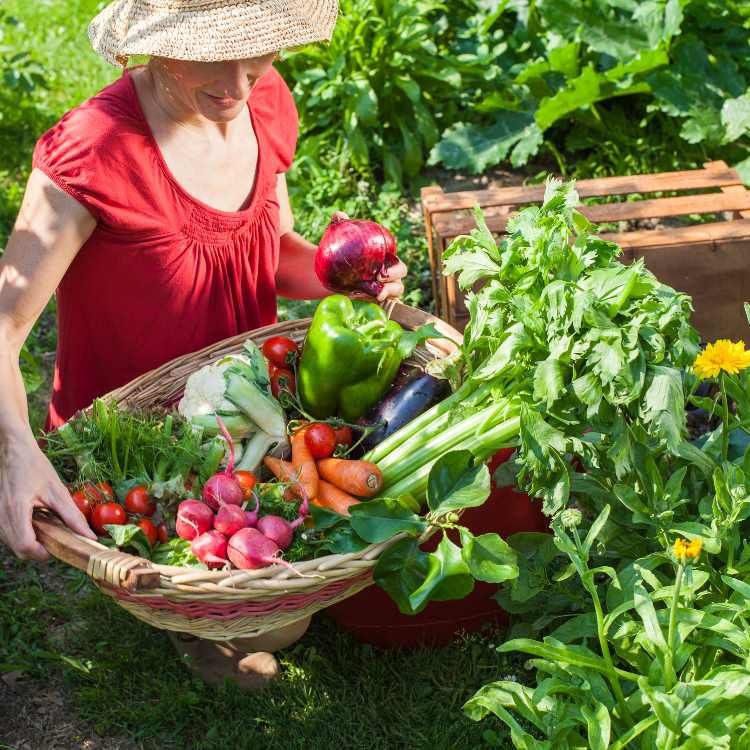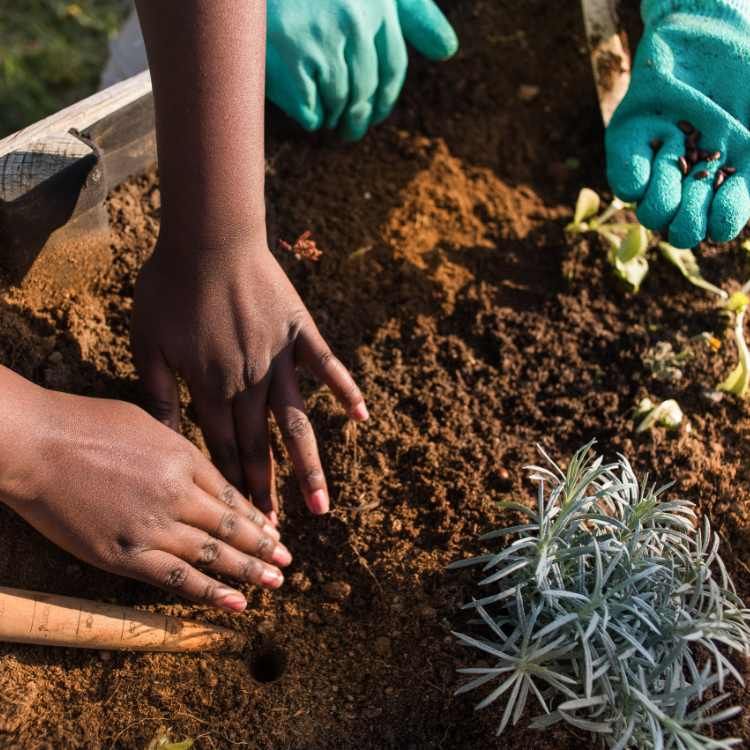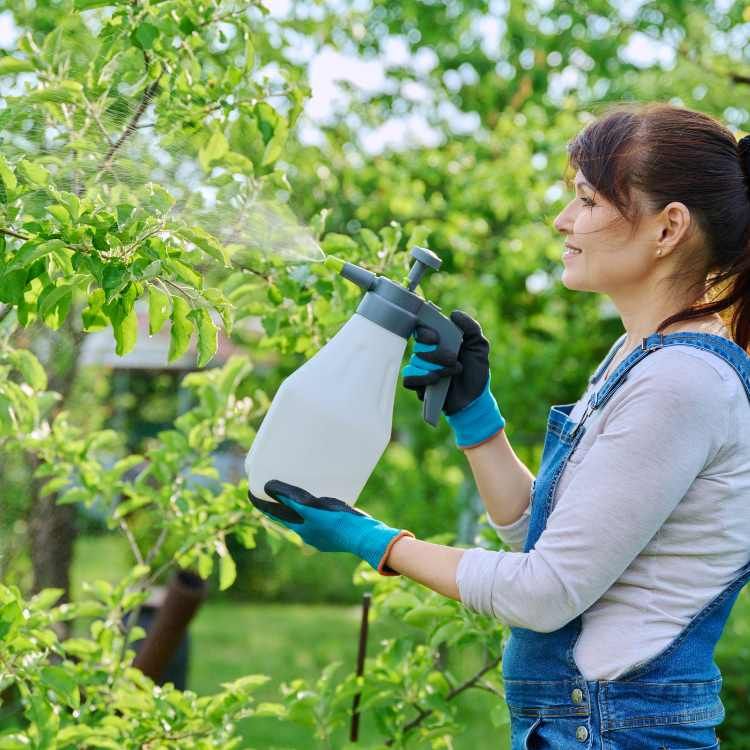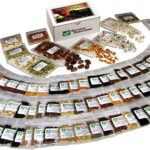
Key Takeaways
An Urban Edible Forest Garden mimics a natural ecosystem to produce food in a sustainable way.
Understanding the layers of an edible forest is crucial for designing a productive garden.
Setting clear goals and assessing available space are the first steps in planning your urban garden.
Choosing plants that thrive in your climate and ecosystem ensures a resilient garden.
Design strategies like vertical space utilization and companion planting maximize yield and health.
Discover the Essentials of Urban Edible Forest Gardens
Imagine stepping outside your door into a lush, self-sustaining oasis brimming with fruits, vegetables, and herbs. That’s the vision of an urban edible forest garden—a harmonious blend of nature and nourishment right in your own backyard or community space. Let’s embark on this green journey together and transform your urban area into a food-producing paradise.
Defining an Urban Edible Forest Garden
An urban edible forest garden is a carefully designed green space that combines the biodiversity and resilience of a natural forest with the productivity of a traditional garden. It’s more than just a collection of plants; it’s a living, breathing ecosystem that works with nature, not against it, to yield an abundance of food.
But why an “edible forest” in the city? Because it allows us to utilize small urban spaces efficiently, promote biodiversity, and create a sustainable source of fresh produce. It’s a way to reconnect with nature and take control of our food sources, even in the heart of a concrete jungle.
The Layers of an Edile Forest
Just like a natural forest, an edible forest garden has multiple layers, each with a specific role to play:
The Canopy: Tall fruit or nut trees make up this topmost layer.
Understory Trees: Dwarf fruit trees and larger shrubs fill this layer.
Shrubs: Berry bushes and other productive shrubs reside here.
Herbaceous Layer: Perennial vegetables and herbs grow at this level.
Ground Cover: Low-growing plants that spread horizontally.
Root Layer: Root crops like carrots and potatoes occupy this underground layer.
Vertical Layer: Vines and climbers use the vertical space of other plants.
By understanding these layers, we can design a garden that mimics the efficiency and productivity of nature itself.
Planning Your Urban Garden Journey
Before we dive into the soil and seeds, it’s essential to lay the groundwork. Planning is the first step toward a successful edible forest garden, and it begins with setting your goals. Are you looking to supplement your diet, create a community space, or perhaps provide a habitat for local wildlife? Your objectives will shape your garden’s design.
Setting Goals and Assessing Space
Start by taking a good look at the space you have available. Whether it’s a small backyard, a rooftop, or a balcony, every inch counts. Assess the sunlight, shade, and existing vegetation. Consider factors like access to water and the presence of any structures that might affect your garden.
Most importantly, think about how much time you can dedicate to your garden. A well-designed edible forest is low-maintenance, but it will still require care, especially in the early stages.
Choosing the Right Plants for Your Climate
Success in your urban edible forest garden heavily relies on selecting plants that are well-suited to your local climate and soil conditions. This means choosing native plants or those that are well-adapted to your area’s temperature ranges, rainfall, and seasonal changes.
Therefore, research is key. Visit local nurseries, talk to gardening experts, and connect with community gardeners to learn from their experiences. Remember, the right plant choices lead to a resilient and thriving garden ecosystem.
Implementing Companion Planting Techniques
Companion planting is like matchmaking for your garden. It involves placing plants together that can help each other grow. For example, tall sunflowers can provide shade for heat-sensitive lettuce, while marigolds can deter pests from nibbling on your veggies. This technique not only maximizes space but also encourages a healthy, diverse ecosystem within your urban edible forest garden.
Here are a few companion planting pairings to get you started:
Tomatoes love basil and marigolds – the basil repels flies and mosquitoes, while the marigolds fend off nematodes.
Carrots and onions are great buddies – onions can repel the carrot fly, a common pest for carrots.
Beans and corn – beans can fix nitrogen in the soil, which corn gobbles up to grow tall.
Companion planting is a dynamic process, and you’ll learn what works best for your garden through experience. Keep a garden journal to track your observations and tweak your pairings each season for optimal results.
Soil and Sustainability: Foundations of Garden Health

Healthy soil is the bedrock of any garden, especially an edible forest. Soil isn’t just dirt; it’s a living, breathing community of organisms that are vital to plant health. Building and maintaining rich, fertile soil is essential for sustainable gardening practices.
Soil that is well-structured, rich in organic matter, and teeming with microbial life can hold water better, resist erosion, and provide nutrients to your plants. This means less watering, less fertilizer, and less work for you in the long run.
Composting for Nutrient-Rich Soil
Composting is the ultimate recycling project for an urban gardener. By turning your kitchen scraps and yard waste into compost, you’re creating “black gold” for your garden. This rich, decomposed organic matter adds vital nutrients back into the soil, improving its structure and fertility.
Here’s how to start composting:
Choose a spot for your compost bin or pile – it should be easily accessible but out of direct sunlight.
Add a mix of ‘greens’ (kitchen scraps, fresh plant material) and ‘browns’ (dry leaves, cardboard) to your compost.
Keep the pile moist, like a wrung-out sponge, and turn it every week or two to aerate it.
Be patient – compost can take anywhere from a few months to a year to be ready.
When your compost is dark, crumbly, and smells like earth, it’s ready to use. Spread it on your garden beds to give your plants a nutrient boost.
Water Conservation Methods
Water is a precious resource, especially in urban areas. To make your edible forest garden sustainable, it’s crucial to conserve water. Here are a few ways to do that:
Collect rainwater in barrels to water your garden. It’s free and better for your plants than tap water.
Use mulch to cover the soil around your plants. Mulch reduces evaporation, keeps the soil cool, and reduces weed growth.
Consider drip irrigation or soaker hoses, which deliver water directly to the roots of your plants and minimize waste.
Remember, deep, infrequent watering encourages plants to develop deep root systems, making them more drought-tolerant and resilient.
Step-by-Step Urban Forest Garden Implementation
Now that we’ve laid the groundwork, it’s time to get your hands dirty. Implementing your urban edible forest garden is a rewarding process that unfolds over several seasons and even years. Here’s how to start:
Creating a Site Map
Begin by creating a detailed map of your garden space. Measure the area and note any existing features like trees, paths, or buildings. This will help you visualize the space and plan where each layer of your edible forest will go. Consider the sunlight each area receives, the slope of the land, and how water flows through it.
Use your map to plan the placement of your plants, keeping in mind the mature size of trees and shrubs, the sun’s path, and the needs of each plant. Think of it as a puzzle, where each piece supports the others to create a cohesive whole.
Layering Your Edible Forest
With your map in hand, start planting from the ground up. Begin with your trees, the tallest layer, and work your way down to the smallest plants. Here’s a simple guide:
Plant your canopy layer first, spacing trees according to their mature size.
Next, add your understory trees and shrubs, ensuring they have enough space to grow.
Fill in with herbaceous perennials, ground covers, and root crops.
Finally, plant your climbers and vines near structures or trees they can climb.
Remember, the goal is to mimic the layers of a natural forest, so diversity is your friend. A variety of plants means a healthier, more resilient garden.
Maintenance and Care for Your Growing Garden

As your edible forest garden grows, it will require some maintenance to stay healthy and productive. Here are some tasks to keep in mind:
Seasonal Gardening Tasks
Each season brings different tasks in the garden:
Spring: Plant new additions, mulch beds, and start seeds indoors if necessary.
Summer: Keep up with watering, weeding, and harvesting. Watch for pests and diseases.
Fall: Plant trees and shrubs, harvest and preserve produce, and add compost to beds.
Winter: Plan for next year, order seeds, and protect sensitive plants from cold.
By staying attuned to the needs of your garden and the rhythms of nature, you can ensure your edible forest garden thrives year-round.
Natural Pest Management
Pests are a part of gardening, but in an edible forest, you can manage them naturally. Attract beneficial insects like ladybugs and lacewings by planting a diversity of flowers. Practice crop rotation and interplanting to confuse pests. And if you do encounter a problem, opt for organic solutions like neem oil or insecticidal soap.
Remember, a healthy garden with a diverse array of plants is less likely to suffer from serious pest issues. Nature has a way of balancing itself out.
Engaging and Educating Your Community
An urban edible forest garden isn’t just a source of food; it’s also a community asset. Engaging with neighbors, local schools, and community groups can help spread the joy and benefits of urban gardening.
Invite community members to participate in garden planning and planting days.
Organize workshops on topics like composting, plant care, and harvest techniques.
Start a garden club or seed exchange to share resources and knowledge.
By involving your community, you’re not just growing plants; you’re cultivating relationships and strengthening your local food system.
Hosting Garden Workshops
Workshops are a fantastic way to share your passion and knowledge with others. Host sessions on garden design, plant selection, or seasonal care. It’s a chance to learn from each other and foster a sense of stewardship and connection to the land.
Whether you’re a seasoned gardener or a green-thumbed novice, there’s always something new to discover in the world of urban edible forest gardens. So roll up your sleeves, plant some seeds, and watch as your urban oasis flourishes into a bountiful forest garden.
As your urban edible forest garden matures, the excitement of harvesting becomes a delightful reality. Here are some best practices to ensure you reap the fruits of your labor effectively and sustainably.
Best Practices for Harvesting
Harvest in the morning when temperatures are cooler to keep your produce fresh.
Timing is everything. Pay attention to the ripeness indicators for each type of fruit or vegetable. Some may ripen after picking, while others should be picked when fully ripe. Gentle handling is crucial to avoid bruising or damaging your garden’s bounty. For leafy greens, harvest the outer leaves first to allow the plant to continue growing.
Rotating your harvest areas will give plants time to recover. And remember, the more you pick, the more your plants will produce!
After harvesting, wash and sort your produce. Compost any damaged or diseased items to prevent the spread of pests or disease.
Storing and Preserving Your Garden’s Bounty
Once you’ve harvested your crops, proper storage is key to extending their shelf life. Many vegetables can be stored in a cool, dark place. Root vegetables like carrots and potatoes do well in a root cellar or similar environment. For fruits and many vegetables, refrigeration can help maintain freshness.
For long-term storage, consider preserving techniques such as canning, freezing, drying, or pickling. Not only will these methods allow you to enjoy your garden’s produce throughout the year, but they also provide a sense of security and self-reliance.
FAQ
Urban edible forest gardens often prompt a variety of questions from both seasoned gardeners and beginners alike. Here are some answers to the most commonly asked questions.
How Much Space is Needed for an Urban Edible Forest Garden?
You might be surprised to learn that you don’t need acres of land to create an edible forest garden. Even a small yard or community plot can be transformed into a productive space. The key is to design according to your available area, utilizing vertical space and carefully selecting plants that are appropriate for your garden’s size.
For those with very limited space, such as a balcony or small patio, container gardening and vertical planters can be a great way to grow herbs, small fruits, and vegetables.
What Are the Key Elements of a Forest Garden?
The key elements of a forest garden include multiple layers of vegetation, from tall canopy trees to ground-cover plants. Each layer has a purpose, whether it’s providing shade, producing fruit, or fixing nitrogen in the soil. Diversity is also crucial, as it creates a resilient ecosystem that can withstand pests and diseases more effectively.
Additionally, a successful forest garden incorporates sustainable practices such as composting, water conservation, and natural pest management.
Canopy layer: Tall trees that provide shade and fruit.
Understory layer: Smaller trees and shrubs that enjoy partial shade.
Herbaceous layer: Edible plants and herbs that grow in dappled sunlight.
Ground cover: Plants that protect the soil and provide additional yield.
Vertical layer: Vines and climbers that utilize upward space.
Root layer: Root vegetables that grow beneath the soil surface.
Can I Create an Edible Forest on a Balcony?
Yes, you can create a mini edible forest on a balcony using containers and vertical gardening techniques. Choose dwarf varieties of fruit trees and make use of hanging baskets for herbs and strawberries. Utilize trellises for climbing plants like beans and peas. With creativity and careful planning, even the smallest spaces can yield an impressive harvest.
How do I Choose Plants for Companion Planting?
To choose plants for companion planting, consider their compatibility in terms of growth habits, nutrient needs, and pest deterrent abilities. For example, tomatoes benefit from being planted with basil, which repels certain insects and improves flavor. Research and observation are your best tools for developing effective companion plantings in your garden.
What Are Some Common Challenges in Urban Forest Gardening?
Urban forest gardening presents unique challenges such as limited space, soil contamination, and potential regulations from local authorities. Access to sunlight can also be an issue in densely built areas. Addressing these challenges requires innovative design solutions, soil testing, and possibly raised beds or containers to circumvent poor soil conditions.







Leave a Reply